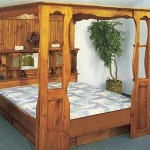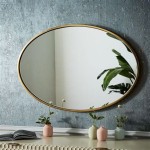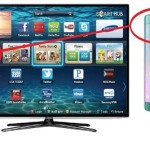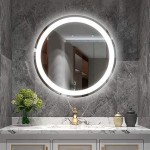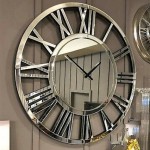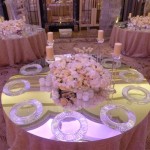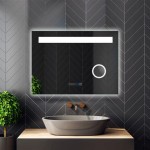How To Connect A Bathroom Mirror Light Fixture
Installing a new bathroom mirror light fixture can significantly enhance the room's aesthetics and functionality. This process requires careful attention to electrical safety and proper wiring techniques. This guide provides a step-by-step approach to connecting a bathroom mirror light fixture.
Safety Precautions: Electrical work always poses potential hazards. Before beginning any electrical project, it's crucial to de-energize the circuit. Locate the circuit breaker corresponding to the bathroom lighting circuit and switch it off. Using a non-contact voltage tester is recommended to confirm the power is off at the fixture location.
Tools and Materials: Gathering the necessary tools and materials beforehand streamlines the installation process. Typically, one will need a voltage tester, wire strippers, wire connectors, electrical tape, a screwdriver, and potentially a mounting bracket specific to the fixture. Always refer to the manufacturer's instructions for specific tools and materials.
Removing the Old Fixture: Carefully remove the existing fixture. Start by unscrewing the decorative nuts or screws holding the fixture to the wall or mirror. Once loosened, gently pull the fixture away from the wall to access the wiring connections. Disconnect the wires by unscrewing the wire connectors. If the wiring is old or brittle, it may be necessary to trim the ends and strip new insulation.
Understanding the Wiring: Most bathroom light fixtures utilize three wires: black (hot), white (neutral), and green or bare copper (ground). The house wiring should also have corresponding colors. It's paramount to connect the wires correctly to ensure proper fixture operation and safety.
Connecting the Ground Wire: Begin by connecting the ground wires. Twist the bare copper or green ground wire from the fixture to the green or bare copper wire from the house wiring. Secure the connection with a wire connector and ensure a tight fit. If the junction box doesn’t have a grounding wire, consult a qualified electrician.
Connecting the Neutral Wire: Next, connect the neutral wires. Twist the white wire from the fixture to the white wire from the house wiring. Secure this connection with a wire connector, ensuring a snug fit. It is essential to avoid loose connections, which can cause overheating and potential fire hazards.
Connecting the Hot Wire: Connect the black (hot) wire from the fixture to the black (hot) wire from the house wiring. Use a wire connector to secure this connection firmly. Again, ensure a tight fit to prevent electrical issues.
Securing the Connections: Gently tuck the wired connections back into the junction box. Avoid overcrowding the box, as this can make it difficult to secure the fixture. The wires should be neatly arranged to avoid any strain on the connections.
Mounting the New Fixture: Align the new fixture with the mounting holes on the wall or mirror. Secure the fixture using the appropriate screws or nuts provided. Ensure the fixture is mounted securely to prevent it from loosening over time. Avoid over-tightening the screws, which can damage the fixture or the wall.
Attaching the Decorative Elements: Once the fixture is securely mounted, attach any decorative elements, such as shades or covers, according to the manufacturer's instructions. These elements often complete the aesthetic look of the fixture and diffuse the light appropriately.
Testing the Connection: After completing the installation, restore power to the circuit by switching the circuit breaker back on. Test the fixture by turning the light switch on. If the light doesn't illuminate, double-check all connections to ensure they are secure and correctly wired. If the problem persists, consult a qualified electrician.
Final Inspection: Inspect the fixture for any loose screws or gaps. Ensure the fixture is flush against the wall or mirror. Check for any exposed wiring. A thorough inspection ensures the installation is complete and meets safety standards.
Variations in Fixture Design: While the general principles outlined above apply to most bathroom mirror light fixtures, specific fixture designs may require slightly different installation procedures. Always consult the manufacturer's instructions included with the fixture for detailed guidance specific to the model being installed.
Working with GFCI Outlets: Bathrooms commonly have Ground Fault Circuit Interrupter (GFCI) outlets for added safety. If the bathroom lighting circuit is connected to a GFCI outlet, ensure it is functioning correctly after the installation. Test the GFCI by pressing the "test" button. The outlet should trip, and the light fixture should turn off. Reset the GFCI by pressing the "reset" button. The light fixture should now function normally.
Seeking Professional Assistance: While many individuals can successfully install a bathroom mirror light fixture themselves, complex wiring situations or a lack of experience with electrical work may necessitate hiring a qualified electrician. This ensures the installation is performed safely and according to code, mitigating potential hazards.

How To Install A Bathroom Vanity Light For Quick Update Hunter Fan

Replacing A Light Fixture On Vanity Mirror

Guide To Hanging Bathroom Vanity Lighting And Mirrors Liven Design

Wooden Light Fixture Over Bathroom Mirrors Gray House Studio

How To Install Bathroom Vanity Lights Homeserve Usa

Positioning Lighting Around A Bathroom Mirror

Bathroom Over Mirror Lighting Ideas 10 Ways To Bathe Your In Light Ideal Home

Replacing A Light Fixture On Vanity Mirror

Bathroom Lighting Tips From Lamps Plus How To Light A Vanity

Wiring A Mirror In To Existing Light Doityourself Com Community Forums

